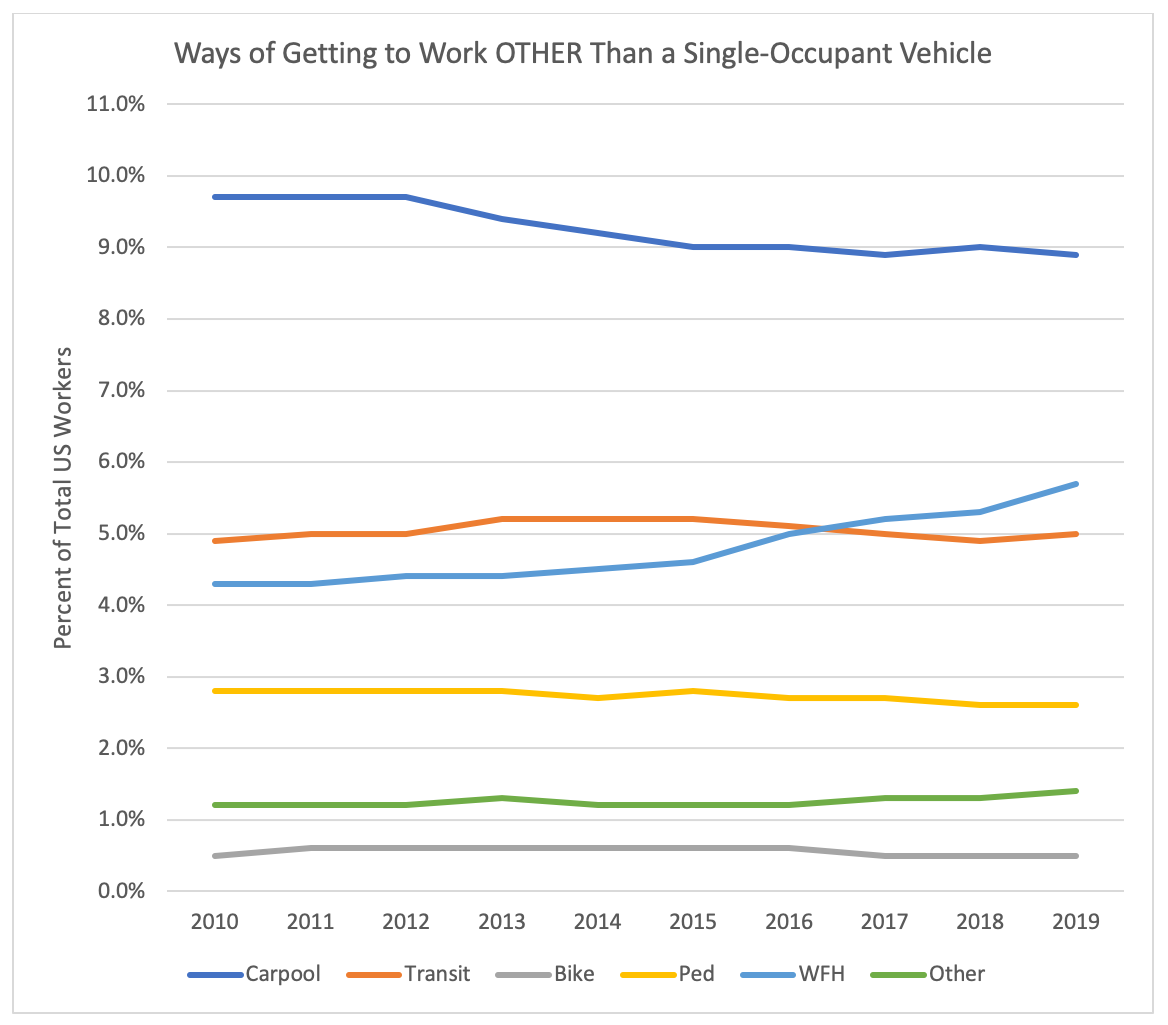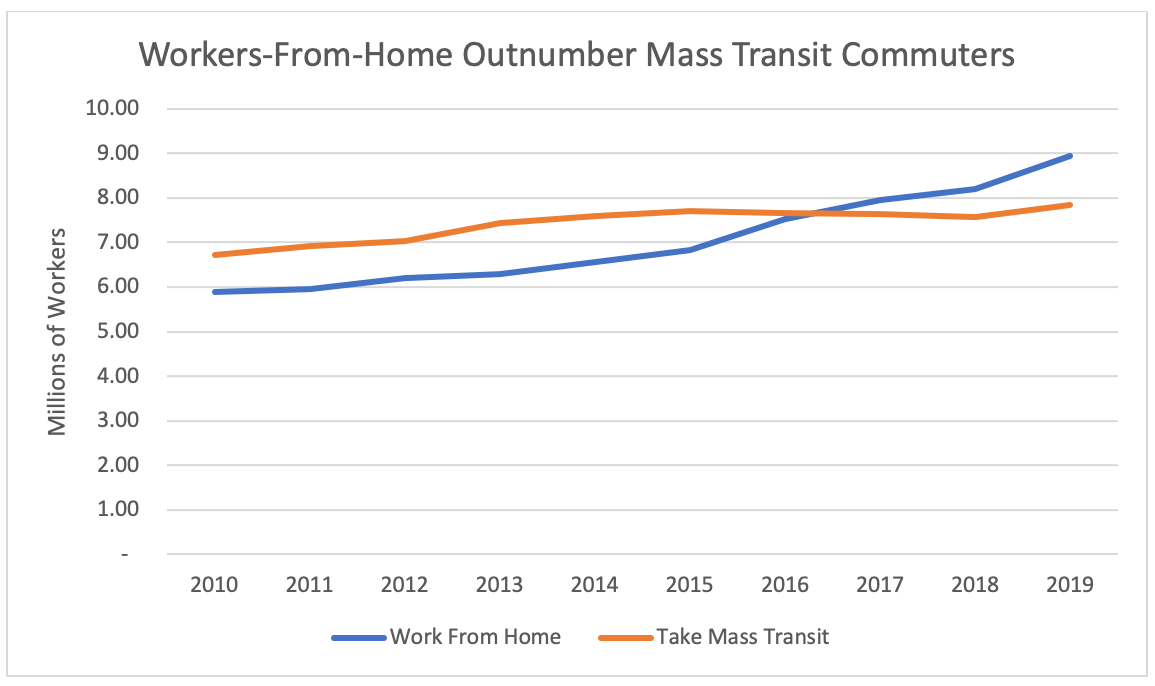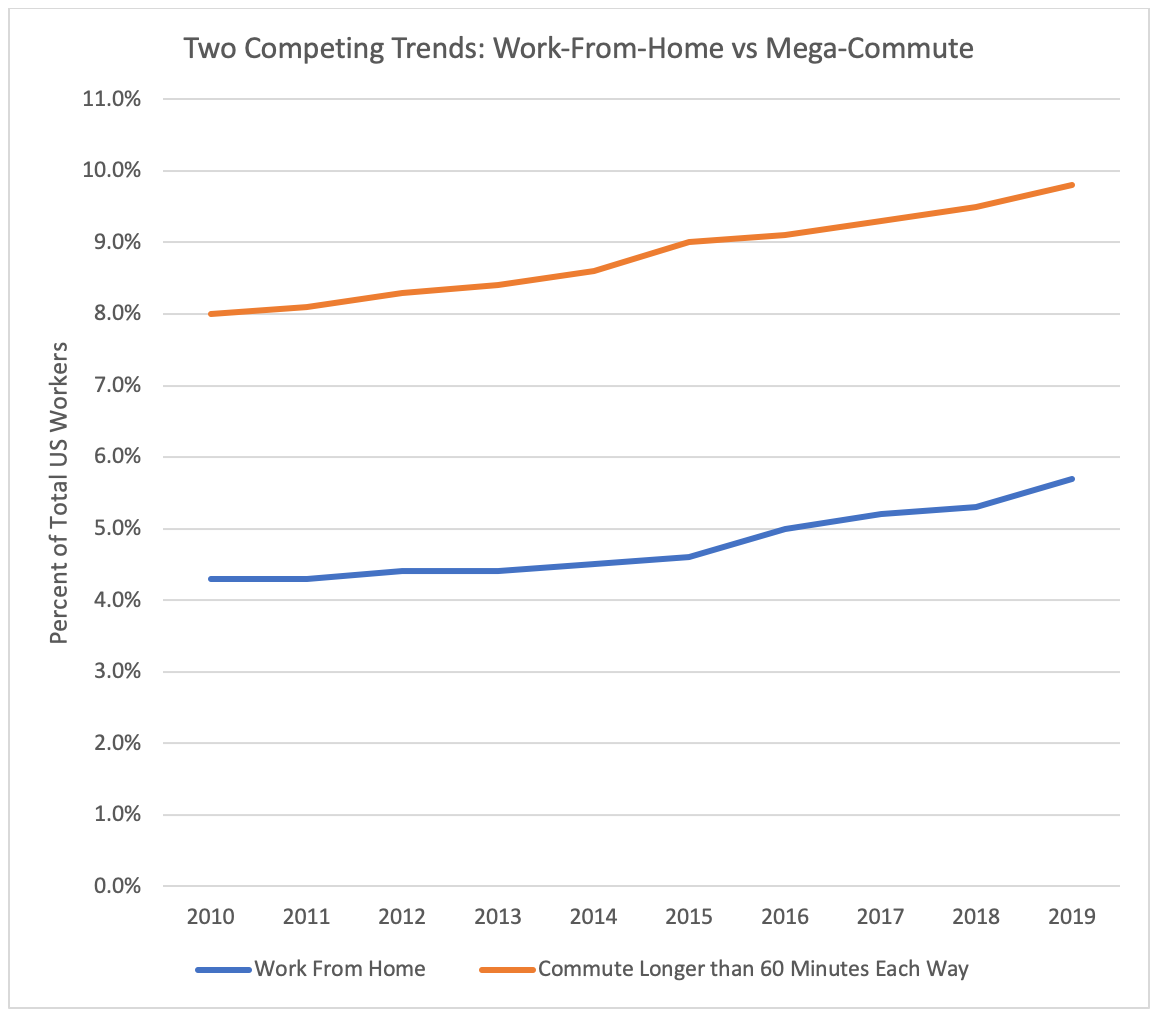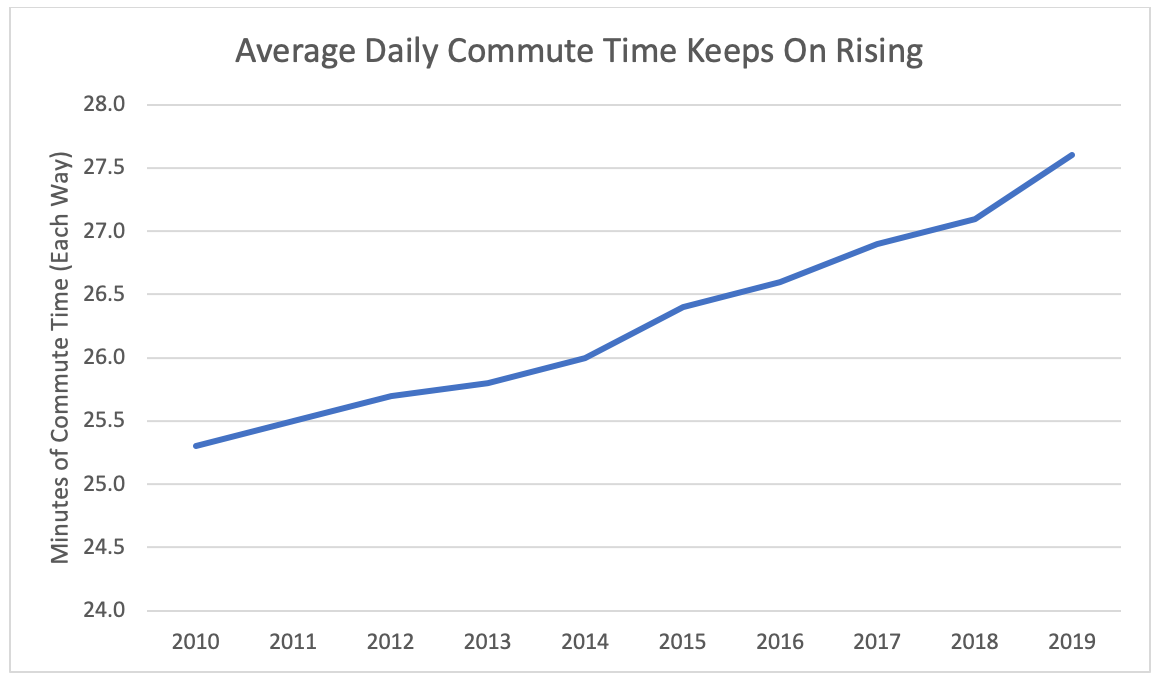The Census Bureau this week released the full dataset for the 2019 American Community Survey, including 1-year and 5-year aggregate data and with localized data selection down to the Census tract or block.
In addition to annual information on demographics and housing, the ACS also includes data on commute modes and times for workers.
On a national level, the last ten years of ACS estimates show that the share of workers who work from home really started an upswing in 2016, while carpooling has gotten relatively less popular, with a decline starting after 2012. Work-from-home was 4.6 percent of all workers in 2015 and rose to 5.7 percent in 2019. (Expect that to skyrocket when the COVID ACS data for 2020 is released a year from now.) Meanwhile, carpools were 9.7 percent of total workers in 2012 but had dropped to 8.9 percent in 2019. (Expect that to plummet in 2020 as well.)

Percentage shares matter, but raw numbers matter as well, and the total number of workers rises each year with population (although, again, 2020 may change that). In terms of raw numbers of workers, there were 5.9 million workers-from-home in 2010 versus 6.7 million daily mass transit commuters. Although both numbers have grown, the lines crossed in 2016, and in 2019, there were 8.9 million daily workers-from-home, compared to 7.8 million daily mass transit commuters.

The data also shows two contradictory trends at opposite ends of the commuter spectrum. As shown above, even before COVID, work-from-home was on the rise, with essentially zero commute time. (As someone who has largely worked from home since the 1990s, welcome to my world.) But at the other end of the range, the percentage of workers who have mega-commutes – more than 60 minutes from home to work, each way – has also risen. As work-from-home rose from 4.3 percent of the workforce to 5.7 percent of the workforce, mega-commuters rose from 8.0 percent of the workforce to 9.8 percent of the workforce.

And, even though more and more Americans work from home, the time of the average daily commute just keeps on going up, from 25.3 minutes each way in 2010 to 27.6 minutes each way in 2019.

As mentioned above, when the 2020 ACS comes out next year, there are going to be some really sharp changes in commute patterns because of COVID. Accordingly, it is good that all of the ACS data is available in either 1-year format or rolling 5-year averages. Again, all the ACS data is now available at https://www.census.gov/programs-surveys/acs/data.html







